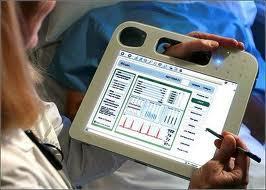Most patient harm events slip through hospital reporting systems
by
Brendon Nafziger, DOTmed News Associate Editor | January 10, 2012

Hospital reporting processes fail to capture 86 percent of patient harm events, according to a federal report published Friday.
Incident reporting systems, required of hospitals that get Medicare bucks, let the vast majority of potentially deadly patient harm events slip through the cracks, largely because hospital staff don't realize the events should be reported, the Office of the Inspector General for the Department of Health and Human Services said in its review.
As a result, the OIG said the Centers for Medicare and Medicaid Services and other federal agencies have indicated they will work together to create clear guidelines to clear up reporting ambiguities.
Adverse events aren't just medical errors -- they include most mishaps, or almost-mishaps, that can happen in patient care, and they're not all preventable. Still, most administrators surveyed for the report told the OIG they rely on incident reporting systems to find problems in their hospitals. That's why the OIG says it's important to act on their results to make health care safer.
For the report, the OIG analyzed the records of a random sample of hospitalized Medicare beneficiaries from October 2008, identifying 302 patients who had harm events, either "adverse events," which led to a prolonged hospital say, permanent harm, critical life-saving interventions or death, or "temporary harm events," which required intervention but weren't as bad. The OIG later queried the 195 hospitals associated with those events to learn about the incident reporting systems, eventually hearing back from 189 of them.
The OIG followed this up with hospital interviews, and interviews with staff from the three national accreditation organizations that monitor compliance for hospitals participating in Medicare, as part of quality assessment rules.
According to OIG, 27 percent of Medicare beneficiaries in the hospital experienced at least one adverse event (13.5 percent) or one temporary harm event (13.5 percent), according to October 2008 figures.
Still, the incident reporting systems at the hospitals surveyed only captured about 14 percent of the harm events identified in the study. In fact, only two of the 18 most serious adverse events - ones that led to permanent disability or death - were captured by the system.
"Serious events not captured by incident reporting systems included hospital-acquired infections, such as a case of septic shock leading to death; and medication-related events, such as four cases of excessive bleeding because of the administration of blood-thinning medication that also led to death," the OIG wrote in its report.
Why weren't more events reported? Hospital administrators said for the majority of cases (62 percent of events), staff simply didn't think an event was reportable, often because there was no "error" or else because the event was an expected or common side effect of a procedure.
But as a result of the investigation, changes could be coming soon. The OIG said CMS is collaborating with the Agency for Healthcare Research and Quality (AHRQ) to develop a list of "potentially reportable events" and to provide technical assistance to hospitals using the list.
"CMS stated that a voluntary list of adverse events used for informational purposes could be highly beneficial for improving incident reporting practices. CMS also indicated that it is developing draft guidance for surveyors regarding assessment of patient safety improvement efforts within hospitals," the OIG said.
|
|
|
You Must Be Logged In To Post A Comment
|
